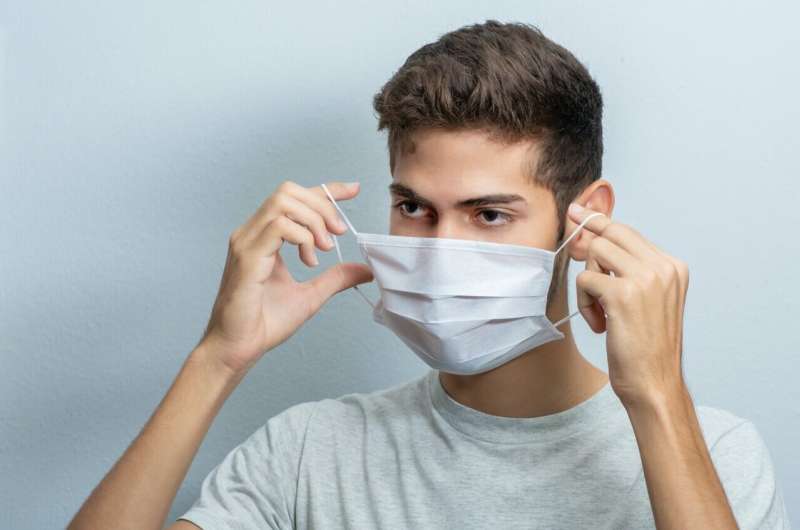Credit: Unsplash/CC0 Public Domain
As face coverings have become more and more ubiquitous during the coronavirus pandemic, their effects on nearly every aspect of life have been called into question. For one, a better understanding of the impacts of face masks and shields on acoustic transmission in classrooms could help optimize educational settings.
During the 180th Meeting of the Acoustical Society of America, held virtually June 8-10, Laura and Rich Ruhala, from Kennesaw State University, talked about how various types of face coverings may affect students' understanding of their teacher. Their presentation, "Acoustical transmission of face coverings used to reduce coronavirus transmission in a classroom environment," took place Tuesday, June 8, at 10:50 a.m. Eastern U.S.
Using a simulator to generate artificial sounds within the frequency range of human speech, the researchers compared sound levels throughout a classroom with 12 different face coverings, including masks, shields, and gaiters. Though some coverings led to more intelligible speech than others, this typically corresponded to a decrease in effectiveness against virus transmission.
"We found that some masks performed well in the acoustic testing, such as a thin gaiter-style mask, but poorly when compared to reported droplet transmission rates," said Laura Ruhala. "Others were the opposite—good in droplet transmission rates, but not as good with the acoustic testing—such as the N95 and KN95 masks."
Common across all different face covering types, the researchers noticed a drop-off in speech intelligibility as students moved farther away from the teacher. Surprisingly, adding a face shield or clear plastic mask amplified the teacher's voice at certain frequencies, but with a trade-off of even larger reduction than cloth masks at other frequencies.
So far, the simulator has only been used to create white noise, though it is capable of much more. The group hopes to further their understanding of classroom speech intelligibility using more realistic sound signals.
"Next, we plan to evaluate data collected with artificial and American English male and female speech signals with the same equipment," said Richard Ruhala.
More information: Laura A. Ruhala et al, Acoustical transmission of face coverings used to reduce coronavirus transmission in a classroom environment, The Journal of the Acoustical Society of America (2021). DOI: 10.1121/10.0004379
Journal information: Journal of the Acoustical Society of America
Provided by Acoustical Society of America
























